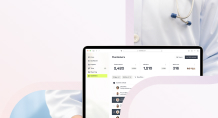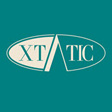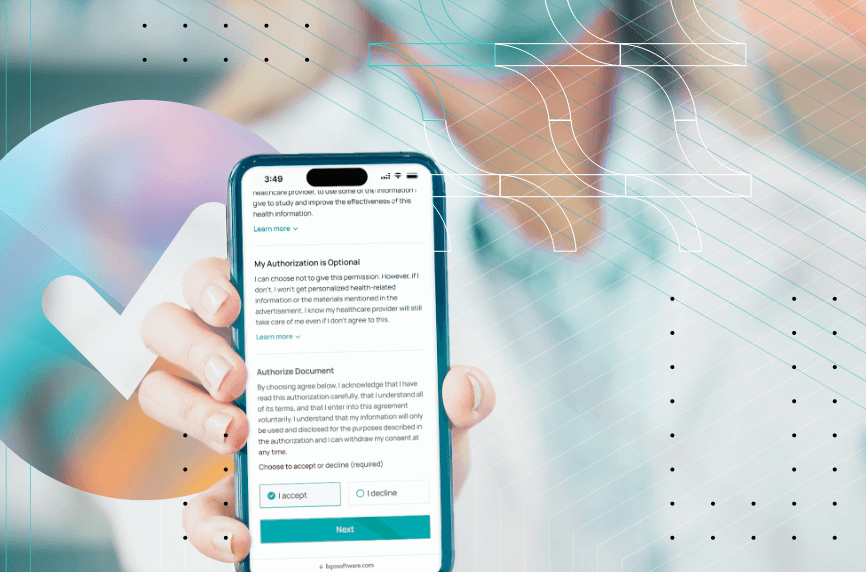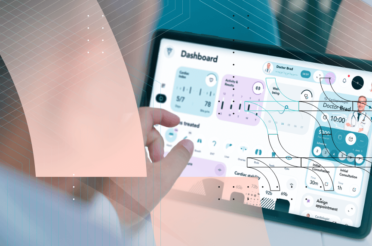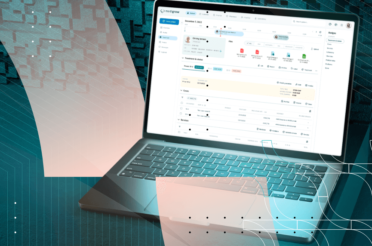Have you ever wondered why the eConsent software, which allows trial participants to read and sign informed consent documents online, has become so popular recently?
In this article, we will answer this and many more questions. We’ll have a look at what exactly Electronic Informed Consent is and which are some of its advantages – improved participants’ experience, ensured compliance, reduced administrative burden.
What else will be tackled is how the regulatory landscape looks like in clinical trials, what the implementation of eConsent looks like in diverse clinical trial settings, and anything else you need to know on the topic in one place.
What is an Electronic Informed Consent
eConsent is not only a paper document transcribed onto a mobile device. It is a tool that motivates patients to make informed decisions through the use of interactive, multimedia components. Moreover, it gives access to the improved quality and efficiency of clinical trials through insight into the patient experience, improved data quality and a fully electronic system.
Electronic informed consent (eConsent) provides the same information, which any patient would have access to on paper, but in an electronic format that may include multimedia components.
Some of the elements of the informed consent form may include the following:
- Images;
- Audio;
- Video;
- Diagrams;
- Reports;
- Call out boxes;
- A digital signature, and others.
eConsent is not meant to replace the important discussion between the participant and site staff, as the site will continue to play a critical role in the consenting process. It is, in fact, a method that can improve the discussion between the staff and the patients.
Advantages of eConsent software in clinical trials
eConsent patient consent software became popular during the pandemic and has increased its visibility and practicality ever since. Clinical research staff who were working from home couldn’t bring paper forms with clinical trial information to patients, especially those who had COVID-19, and quickly adopted software to solve the problem.
So what are the specific reasons research sites kept implementing and developing the eConsent technology in their work? Let’s find out in the following paragraphs.
Improving participant experience
One of the primary benefits of eConsent software is its ability to improve the clinical trial participants’ experience. Traditional paper consent forms can be confusing and overwhelming, which leads to a significant dropout rate in clinical trials.
According to a survey by CISCRP (The Center for Information and Study on Clinical Research Participation), about 14% of participants do not complete their clinical trials, often due to difficulties understanding consent forms and documents.
Participants may leave a trial for various reasons, such as personal commitments or concerns about transportation and side effects. However, CISCRP’s surveys indicate that confusion over informed consent documents is a key factor.
For instance, 35% of participants who dropped out found the consent documents hard to understand, compared to just 16% of those who completed the trial. Furthermore, 36% of those who dropped out said their questions about consent were not adequately answered, versus only 11% of those who stayed.
Convenience and comfort for participants
eConsent software allows participants to review and sign consent forms from their own homes. This flexibility can significantly improve retention rates. Morgan Oates, Regulatory Coordinator for Levine Cancer Institute at Atrium Health, noted that participants often hesitate to stay after appointments to read and sign consent forms or to take forms home, knowing they would need to return them later. (1)
By completing the forms at home, patients can take the time they need to fully understand and discuss the information with loved ones. This approach is not only more convenient but also leads to better comprehension and comfort. Indeed, 61% of participants find electronic consent forms very easy to understand, compared to just 41% for paper forms.
Increasing Participant Enrollment
Boosting participant enrollment, especially from diverse populations, is another major advantage of a modern eConsent solution. Decentralized and hybrid trials, which utilize technology and can occur at various locations, are becoming more common. Modern clinical research specialists emphasize the need to reach a broad population, including those often missed by traditional trials.
eConsent facilitates this by enabling participants to complete forms remotely and by allowing coordinating centers to collaborate with community sites. This central consenting system ensures consistency across multiple locations, which is crucial for expanding trial reach.
Companies reports’ claim that decentralized trials can reduce recruitment time by 30-50%, increase retention rates by 90%, and boost patient interest by 97%. Thus, eConsent is key in making decentralized trials more effective and in increasing enrollment.

Interested in improving your clinical trials with eConsent Software?
Learn about its benefits by contacting BGO Software’s experts

Reducing Administrative Burden
eConsent options significantly cut down on the paperwork associated with clinical trials. Traditional paper-based consent forms involve scanning, filing, and storing vast amounts of documentation, which is time-consuming and inefficient.
According to current users, eConsent can save approximately one hour of paperwork time per consent. With eConsent, electronic forms are sent out and stored digitally, eliminating the need for physical storage.
Ensuring Compliance
Staying on track with regulations is essential in clinical trials, and adopting eConsent software can help achieve this.
When evaluating eConsent platforms, look for features like audit trails and version control. These tools help track who has uploaded or signed documents and make it easy to compare old and new consent forms.
Such features not only ensure patient compliance but also streamline the preparation for inspections. Instead of sifting through binders, you can grant monitors access to view the latest documents online, saving time and effort.
Regulatory Landscape for eConsent in Clinical Trials
The move to eConsent forms in clinical trials is supported by various regulatory bodies like the FDA (Food and Drug Administration) and EMA (European Medicines Agency). They emphasize that eConsent must meet the same ethical and legal standards as traditional paper forms. This includes making sure that patients understand the information, protecting their privacy, and providing opportunities for them to ask questions in real time.
Compliance with data privacy regulations, such as GDPR in Europe and HIPAA (Health Insurance Portability and Accountability Act) in the United States, is also significant. These regulations mandate strict protections for personal health information, securing that patients’ data is secure and their privacy is maintained.
FDA 21 CFR Part 11 is a guidance that represents a list of regulations on the topic of Electronic Records, which include all the regulatory must-haves to ensure a safe and penalty-free experience.
Some of them include the following:
- Limiting system access to authorized individuals
- Use of operational systems
- Authority and device checks
- Determination that persons who develop, maintain, or use electronic systems have the education, Training, and experience to perform their assigned tasks
- Requirements related to electronic signatures etc.
As a result, patient understanding of the trial process is backed by a secure and compliant environment that brings significant improvements to clinical research safety and validity.
Security and Data Privacy Considerations
When it comes to eConsent platforms, security, and control are crucial. It’s important that only authorized individuals can access the application, which means there should be strong identity verification options in place.
Not everyone needs the same level of access, so the platform should allow for specific user permissions. For example, you might want to restrict who can view or sign the consent documents. Additionally, a good eConsent system will have audit trails. This feature lets you track who has uploaded new consent documents and exactly when they did it, ensuring transparency and accountability.
Integration with Electronic Health Records
Integrating eConsent software with electronic health records (EHRs) is key to creating a seamless clinical trial workflow. This integration ensures that a patient’s consent status is automatically updated in their medical records, reducing manual data entry and minimizing errors. It also facilitates better coordination between study teams and site staff, ensuring that all relevant information is current and accurate.
Imagine a patient participating in a clinical trial who consents to the study using eConsent software. As soon as they sign the consent form, the software automatically updates their Electronic Health Record (EHR) with their consent status, eliminating the need for manual entry by the clinic staff. This update includes detailed information such as the date and time of consent, the version of the consent form signed, and any specific conditions or notes related to the trial. This ensures that every healthcare provider involved in the patient’s care has immediate access to up-to-date trial participation details.
Implementing eConsent in diverse clinical trial settings
Implementing eConsent across multiple clinical trial settings requires careful planning, considering factors such as patient demographics and regulatory requirements.
Successful implementation involves the following considerations:
- Training site staff;
- Ensuring user-friendly platforms;
- Supporting patients unfamiliar with digital technologies.
For decentralized trials, where participants may be spread out geographically around many sites, eConsent solutions must be adaptable to remote processes. Ensuring that all participants have access to the necessary tools and support is crucial for success. In order for this process to be effective, it should involve customizing the approach to meet the unique needs of each site.
For example, in rural areas with limited internet access, offline access can be especially important as it will allow participants to review and sign consent forms without the need of a constant connection. In urban settings with a high volume of participants, scalability is key, so the eConsent platform must handle large data volumes effectively.
The eConsent software must support multiple languages and comply with varying local regulations in a multi-national setting. For instance, a trial conducted in both the U.S. and Japan would need consent with forms in English and Japanese, each tailored to the specific legal and cultural requirements of the respective countries.
This level of customization ensures that eConsent can be effectively implemented, regardless of the location.
Best Practices for Successful eConsent Adoption
To conclude everything we discussed so far, we will sum up some of the best practices for successful eConsent utilization:
- Engage Stakeholders: Sponsors, study teams, site staff, and participants are all relevant stakeholders and should be carefully considered in the process of planning and implementation.
- Provide Training and Support: Comprehensive training for site staff and support for participants in order to ensure they are comfortable using the eConsent platform is key in introducing and maintaining it.
- Ensure Regulatory Compliance: Meeting ethical and legal requirements is a must when working closely with confidential patient information.
- Customize the Platform: Language preferences and cultural considerations are one of the few specific needs that could occur in the process of the study and its participants.
- Monitor and Evaluate: Monitoring the eConsent process and gathering feedback on a daily basis from participants and site staff is the way to identify areas for improvement.
This is how you get better patient comprehension, ease of use, and patient engagement, along with solid and valid findings from the trial.

Unlock the power of eConsent for your next clinical trial.
See how eConsent software simplifies the consent process, reduces administrative burden, and enhances participant understanding.
Conclusion
It would be hard to disagree that eConsent software is revolutionizing the way clinical trials are managed. It is improving patient experiences and compliance by making the informed consent process more efficient, engaging, and comprehensible. Absolute confidentiality of the data used and constant evaluation and monitoring are also key factors for high quality services.
As clinical research evolves, the adoption of eConsent will play a crucial role in advancing the field, leading to better outcomes for patients and sponsors alike.
Utilizing the maximal benefits from this digital transformation is essential for the future of clinical trials and for staying up-to-date when you want to deliver a modernized practical experience for anyone involved.

